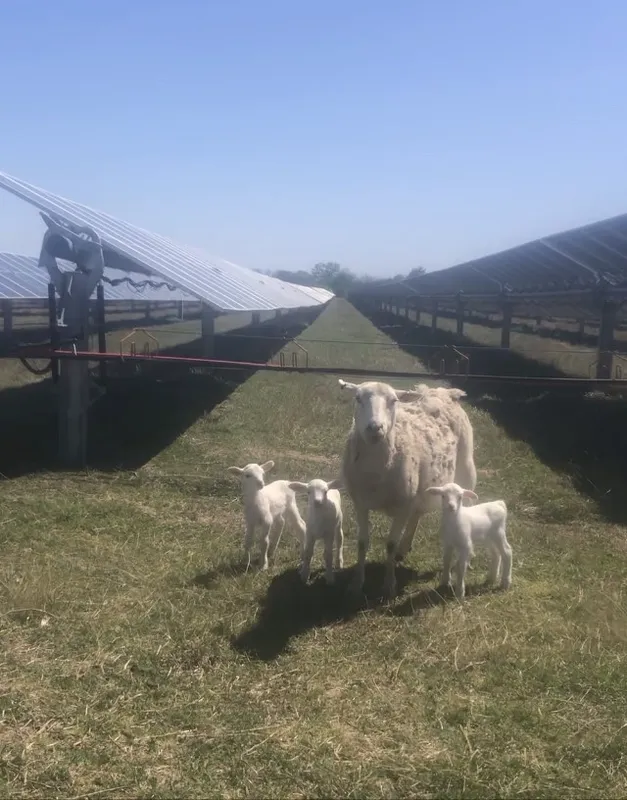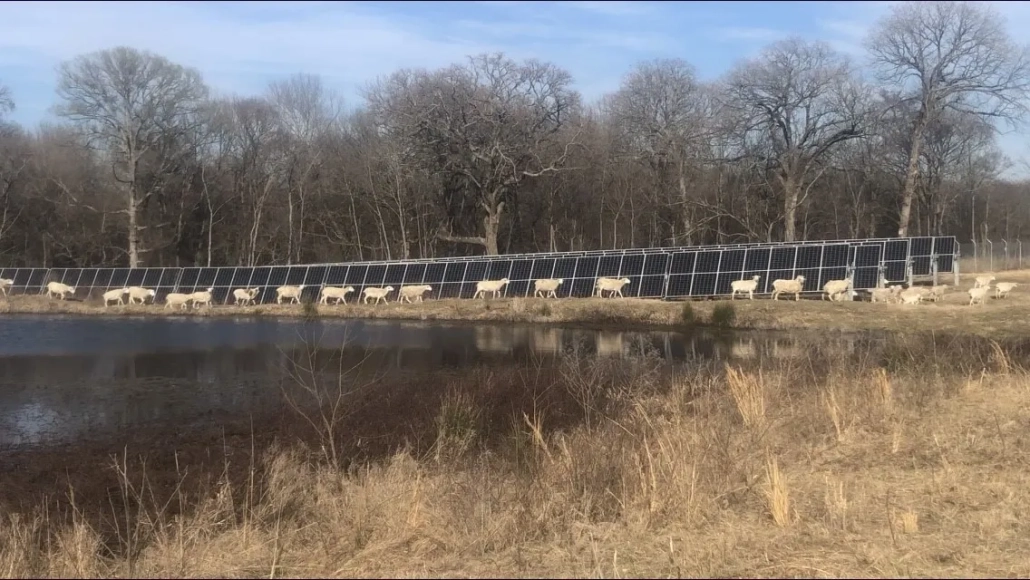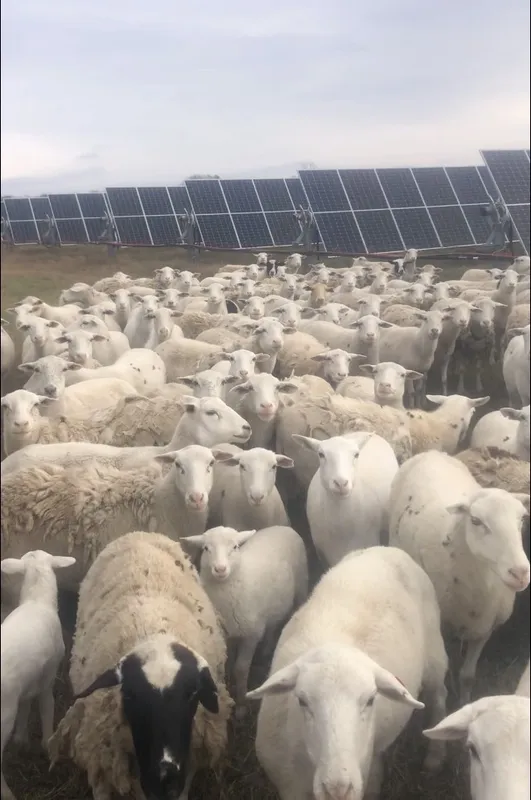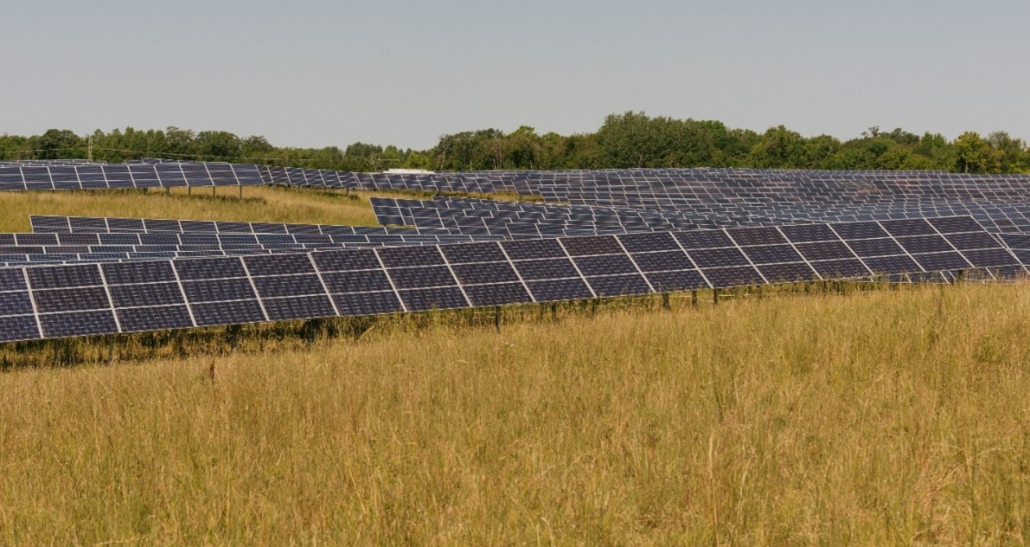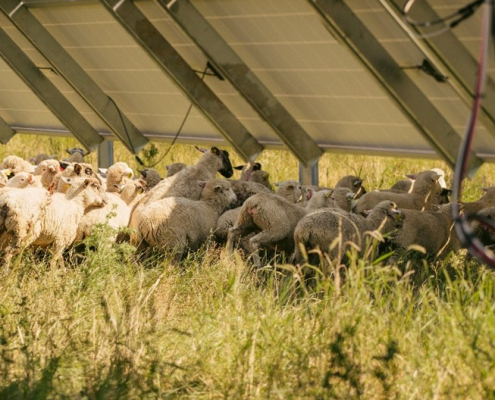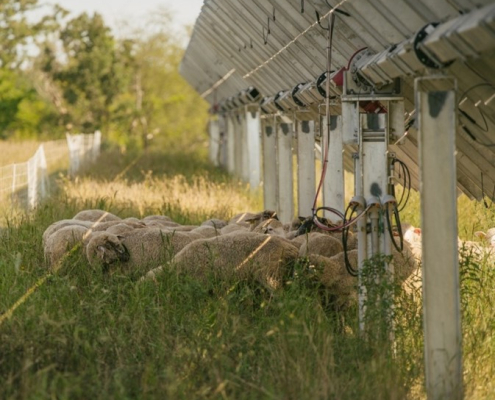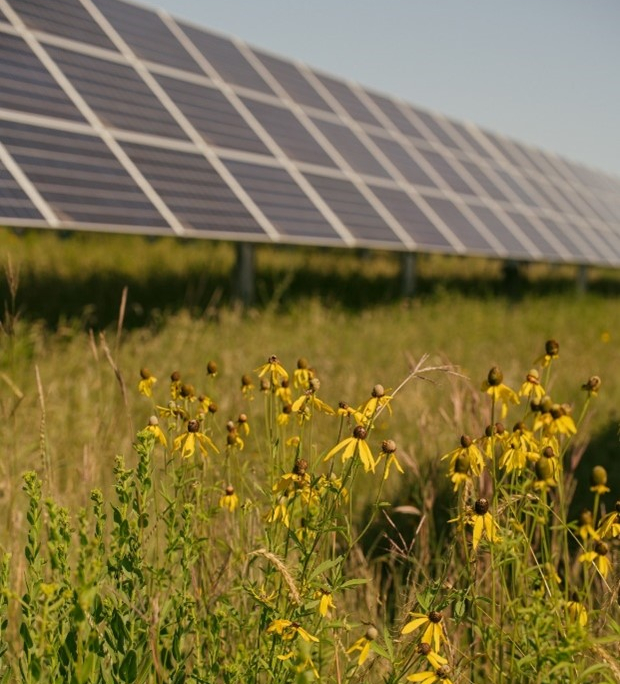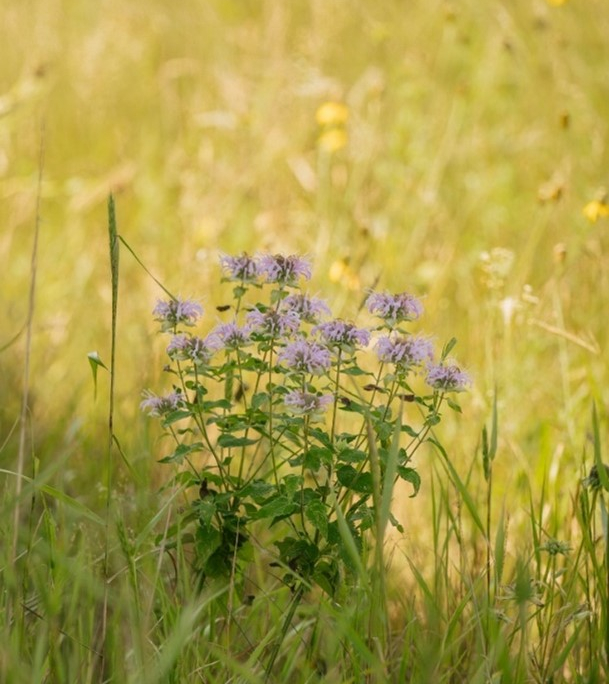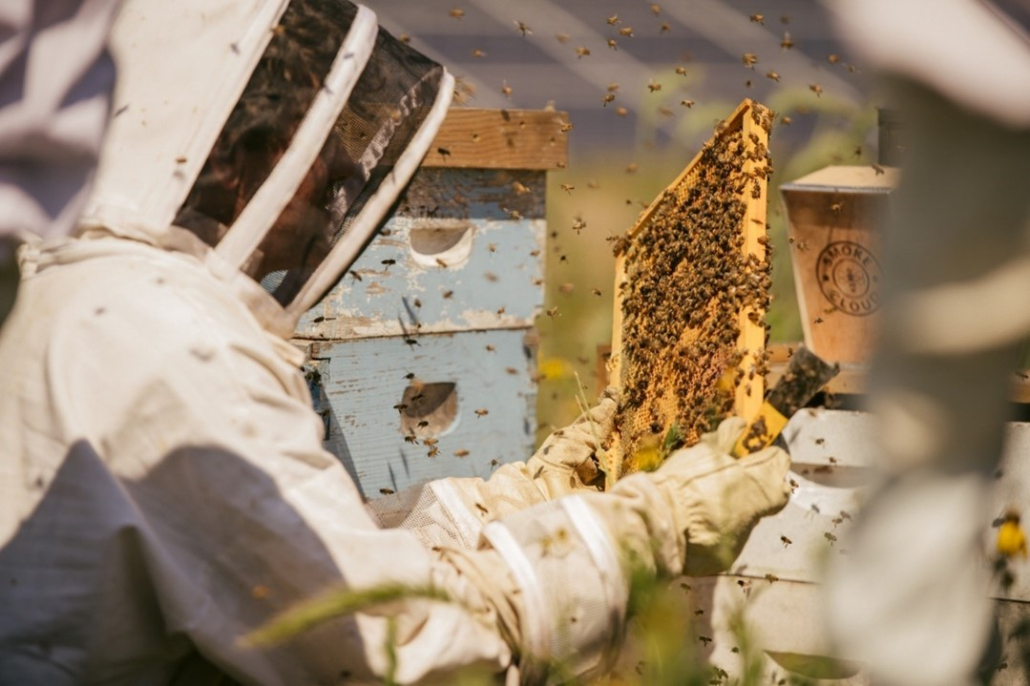Rebecca A. Efroymson, Environmental Scientist, Oak Ridge National Laboratory); and Jonathan M. O. Scurlock, Chief Adviser for Renewable Energy & Climate Change, National Farmers’ Union of England and Wales
Solar photovoltaic (PV) power, the most popular form of renewable energy on farms, is being adopted all over the world. Growers and processors of food worldwide have a long history of using the sun’s energy to produce and dry their crops, and solar PV is adding a modern twist to our relationship with the sun. It is no surprise that some of the best locations on Earth for harnessing solar energy are often ideal places for agriculture and horticulture. However, intelligent design for multi-purpose land use can alleviate real or perceived conflicts between energy and food production. Solar modules can shade crops where light intensity is in excess of crop requirements, reducing water evaporation; they can be mounted on agricultural buildings to power farm business energy needs; and they can export low-carbon electricity to meet wider demands for “green” power and the transition to a “net zero” global economy.
We use the term agrivoltaics broadly to describe any combination of agricultural activity and solar electricity production, but outside the USA, the term usually refers more specifically to the intimate juxtaposition of solar modules and agricultural land use. Examples include PV modules mounted at a height of several meters to allow access to land below by farm machinery or large livestock, where they provide shelter from storms or excessive solar radiation, and the integration of solar PV into greenhouses for crop protection.
We caught up with a range of projects across three continents to report upon their objectives and their future prospects.
Around 30% of British farmers have either rooftop or ground-mounted solar energy. The National Farmers Union (NFU) aspires to the goal that every farmer and grower have the opportunity to become a net exporter of low-carbon energy. The falling capital cost of both solar and battery electricity storage has resulted in a growing pipeline of solar installations across a range of sizes, including large 100-hectare (ha) and 1,000-ha solar farm projects, largely independent of government policy support. The NFU advises farmers that solar PV can be deployed across entire fields, as small, ground-mounted installations around field margins or adjacent to farmyards, on farm buildings, and on domestic rooftops. Developers of solar farms are encouraged by the NFU to follow best practice guidelines for multi-purpose land use, combining energy production, continued agricultural management such as grazing, and creation of wildlife habitat. NFU’s strong preference is for large-scale solar farm development to be located on lower-quality agricultural land, avoiding as much as possible the most productive and versatile soils. Roof-mounted solar systems in Britain continue to offer a sound investment, making between 10% and 25% simple return on capital annually at current electricity prices, depending on how much of the generated power is used on-site. At of the end of 2021, about 70% of the United Kingdom’s 14 gigawatts of solar power generation capacity was located in the agricultural sector.
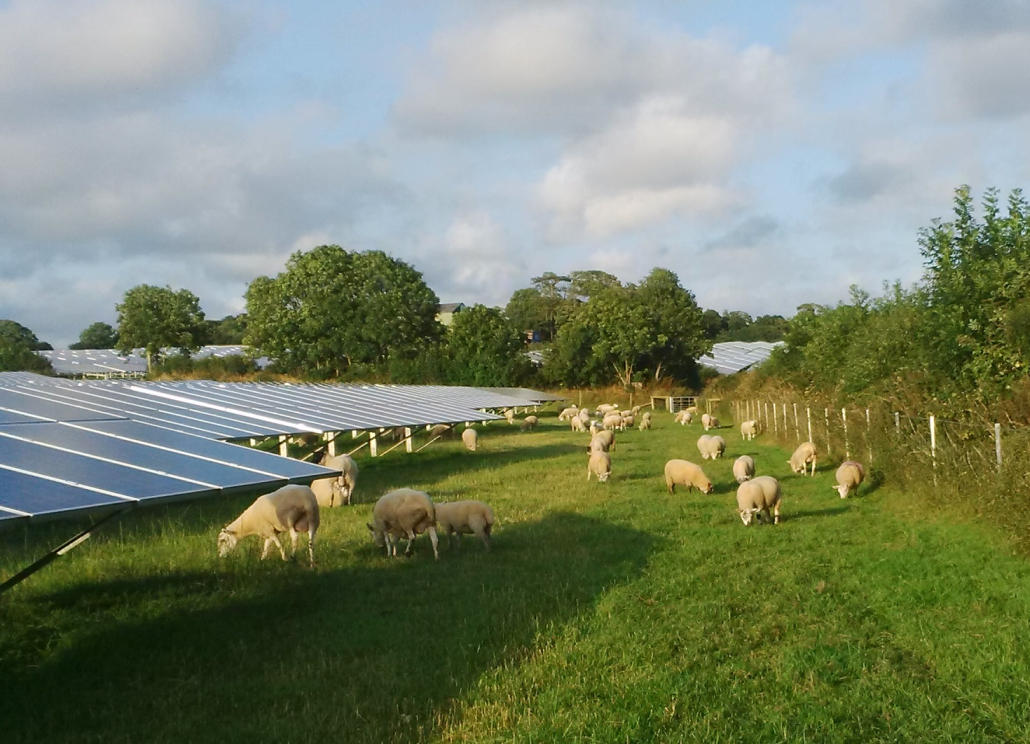
In the Netherlands, the Symbizon project at Almere, near Amsterdam, has brought together a Swedish energy company with Dutch researchers and a private organic farm to construct a 700-kilowatt solar park with alternating strips of PV modules and rows of crops. Starting in spring 2023, the production of herbs will be investigated, and potatoes, beans, beetroot, broccoli, and grains may be included in this pilot study. Pivoting double-sided (bifacial) solar modules will catch the reflected light from soil and crops.
Nearby in Germany, Goldbeck Solar is an innovator in solar agrivoltaic structures. The company has developed a system of solar PV arches that slide on side rails, allowing farmers to shelter or expose various crops. Typically oriented east to west for maximum solar energy yield, the arches span up to 9 meters, at a height of 2.5 to 3 meters, allowing a degree of control over temperature, humidity, and light. These agrivoltaic modules can also provide shelter for livestock from extreme weather, such as high temperatures and hail. The modules are currently undergoing trials in the four-year Sunbiose project in the Netherlands, which had already succeeded in growing raspberries under the partial shelter of solar PV modules.
Agrivoltaics are being tested in East Africa, where their shade can reduce heat stress and water loss, and farmer incomes in disadvantaged rural communities may be improved. An experimental facility opened in 2022 in Insinya, Kenya, through partnership with Universities of Sheffield, York and Teesside in the United Kingdom, the Stockholm Environment Institute, World Agroforestry, the Centre for Research in Energy and Energy Conservation, and the African Centre for Technology Studies. Some 180 PV modules, each 345 watts, have been installed about 3 meters above the ground, allowing a variety of crops to be grown under the shade from the strong equatorial sun. Geoffrey Kamadi of The Guardian reports that benefits include improved yields of cabbage, eggplant, and lettuce; a reduction in water loss; and a reduction in high daytime temperatures and UV damage.
Small-scale agrivoltaic development (less than 0.1 ha) has progressed rapidly in Japan, producing 0.8% of the total solar power generated in the country in 2019. Japan has perhaps the greatest number of agrivoltaic farms to date, with more than 120 plant species being cultivated on agrivoltaic farms. The Solarsharing Network provides a catalog of 27 agricultural crops (Solar Sharing for FUN | SOLAR SHARING NETWORK| Solar Sharing Association of Japan (solar-sharing.org) and their light needs. Innovative crop systems include tea, according to Makoto Tajima and Tetsunari Lida of the Institute for Sustainable Energy Policies.
One pilot agrivoltaic project in New Zealand is seeking low-growing flowering plants like alyssum to attract bees and reflect light up to rows of bifacial PV modules. The high energy demand of irrigation systems can benefit from on-farm solar energy. In New Zealand, as in the U.S., UK, and Australia, sheep and other small livestock graze under solar modules, avoiding the need for mowing. As New Zealand reporter Delwyn Dickey notes, the success of such large-scale agrivoltaic systems (i.e., solar farms) may be determined by an insistence upon dual land use during the consenting process and the willingness of solar energy development companies to adopt dual land use.
Clearly, from small-scale intimate mingling of solar PV with agricultural production to multi-purpose land use in the largest of solar farms, the merits of harvesting the sun’s energy twice are appreciated the world over. The outlook for agrivoltaics is bright indeed.

